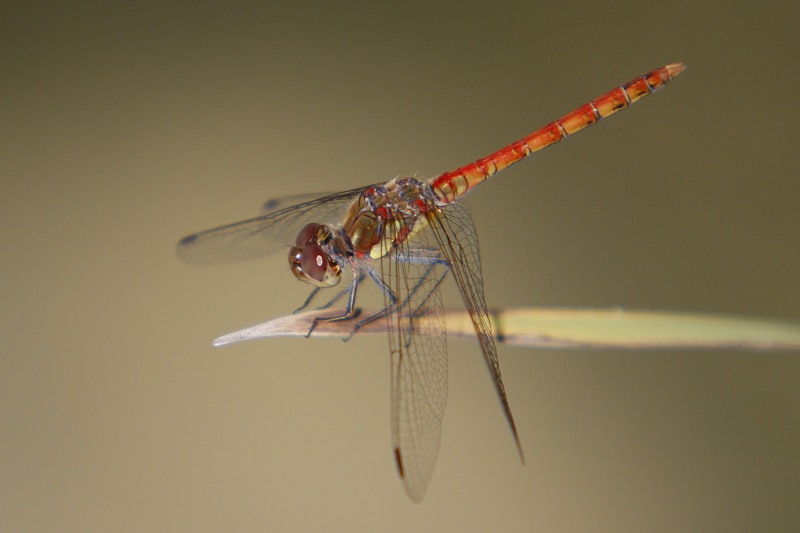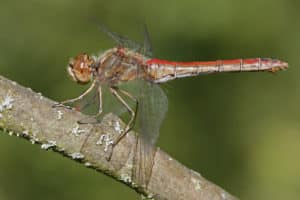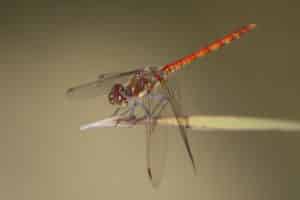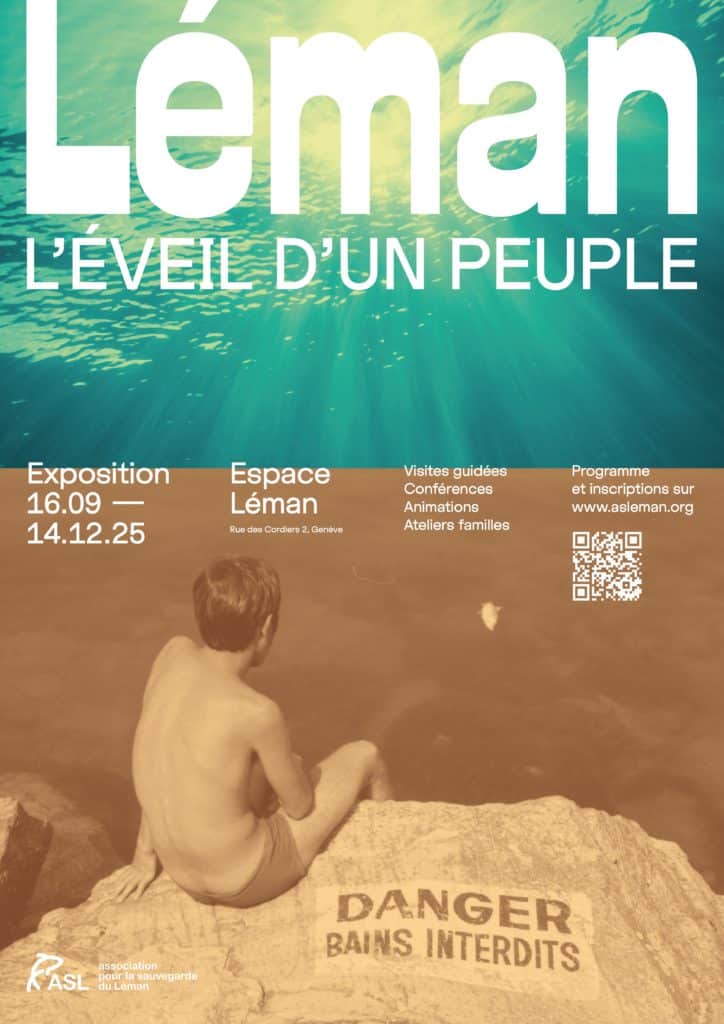Dragonflies and damselflies, often confused, belong to the same order of insects: the Odonata. Similar in many ways, they are easily distinguished by their wings: dragonflies (Anisoptera) cannot fold them down, keeping them perpendicular to their body, whereas damselflies (Zygoptera) close them when at rest. This order has unparalleled flight abilities - unlike other flying species, Odonata can fly backwards, diagonally, sideways and even in place, thanks to their ability to mobilise their two pairs of wings separately - making them excellent hunters at the imago stage (flying adult).
Like many insects, these masters of the air begin their lives in the water, where they lay their eggs. They remain there throughout their larval stage, feeding on insect larvae (mosquitoes among others), and even on tadpoles and fry! Among the most common genera on the shores of Lake Geneva are the ischnids (damselflies) and the aeschnids and sympetrums (dragonflies).
Their presence in aquatic environments is a remarkable health indicator. Around Lake Geneva, reedbeds and submerged grass beds (where the submerged part supports the eggs and larvae), as well as certain sites where Odonata lay their eggs in the mud, help to maintain them. On the other hand, the artificialization of these environments (riprap, concrete walls), water levels that are too low (high water levels), trampling of the banks (access for swimming, walking, etc.) and pollution are all threats to the Odonata. Action taken to restore riverbanks to their natural state is helping to repopulate biodiversity. For example, the Grangettes nature reserve near Villeneuve (Vaud) is currently home to 34 species, while the Pointe-à-la-Bise reserve in Geneva is home to 18. Despite these protection efforts on both sides of the border, around 50% of the species on Lake Geneva remain under threat.
📷: © Sympétrum strié (Marc Solari)




